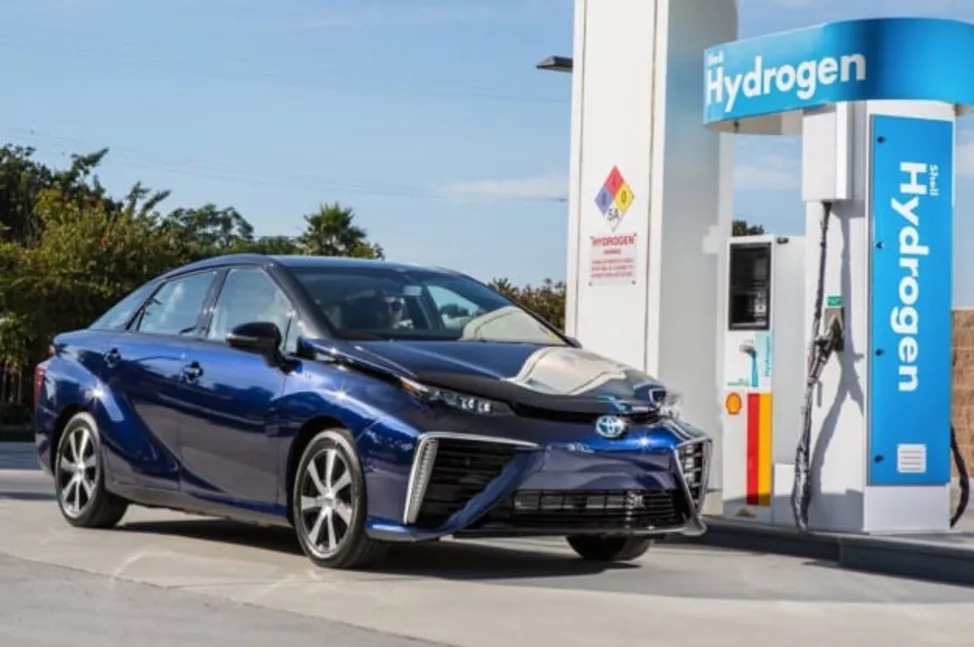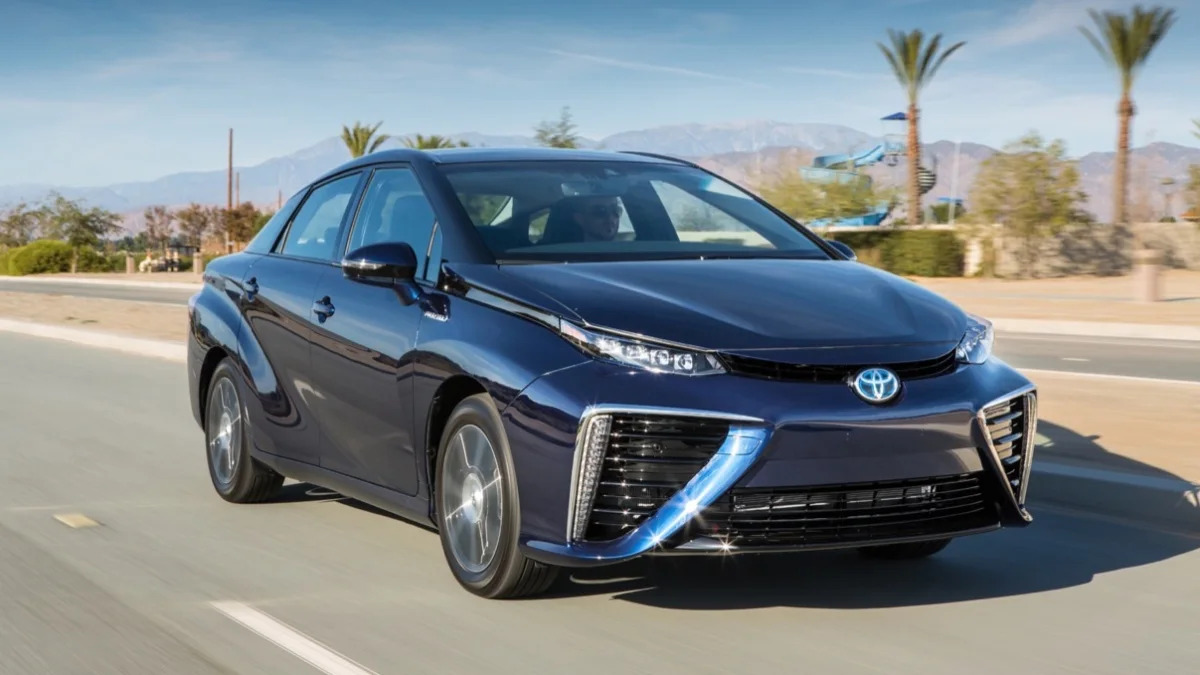Just like Hyundai did with its Tucson fuel cell, Toyota is offering free hydrogen fuel with the $57,500 Mirai H2 sedan. Toyota is being a bit vague about the details, saying simply that Mirai drivers will get, "complimentary hydrogen fuel for up to three years." Turns out, the reason that the hydrogen avant-garde will not be paying anything at the pump isn't because the automakers want to give them a boost or because the OEMs are kind. Instead, it's simply impossible to accurately charge people for hydrogen right now.
Alberto Ayala, the deputy executive officer for the California Air Resources Board, said CARB is in the middle of developing a way to sell a given amount of hydrogen, "which up to this point doesn't exist. If you think about it, it's a real simple yet real practical challenge. If you're going to pay for X amount of hydrogen, you're actually getting that amount of hydrogen." Ayala said it's not a difficult technical problem to measure the hydrogen as it goes into the car, but "we just have not done it. We are at a point where we are solving multiple remaining questions [with hydrogen infrastructure], and that just happens to be one of them." The National Institute of Standards and Technology says that there has been a discussion to change the current tolerance of two percent up to 10 or 20 percent, but that new technology should be able to measure accurately to within one percent.

Air Liquide is working with Toyota to launch the Mirai in the US and Air Liquide CEO Ole Hofelmann told AutoblogGreen that being able to charge customers will be key to the technology's success. "We need to make sure we accurately measure the gas," he said. "Afterwards, it needs to be calibrated so you have the tools in place that allow you to go back and make sure that every station is measuring things correctly. The future being that the consumer would be able to walk up to a hydrogen fuel station just like today a gas station and slide that card through and be able to dispense fuel."
The panel agreed that the problem is solvable, and that a solution should be ready in the next six months to a year.
At an in-depth hydrogen seminar this week as part of the Mirai preview, three representatives from various hydrogen organizations revealed that the current hydrogen stations (most of which are in California) are not set up to accurately measure the hydrogen that is dispensed. Without this little bit of information, you can't charge customers for the fuel they use. Toyota is well aware of this, and Toyota Motor Sales' national manager of environmental, safety and quality communications, John Hanson, said that, "There are no set standards, so there is no way to charge people for anything."It's simply impossible to accurately charge people for hydrogen right now.
Alberto Ayala, the deputy executive officer for the California Air Resources Board, said CARB is in the middle of developing a way to sell a given amount of hydrogen, "which up to this point doesn't exist. If you think about it, it's a real simple yet real practical challenge. If you're going to pay for X amount of hydrogen, you're actually getting that amount of hydrogen." Ayala said it's not a difficult technical problem to measure the hydrogen as it goes into the car, but "we just have not done it. We are at a point where we are solving multiple remaining questions [with hydrogen infrastructure], and that just happens to be one of them." The National Institute of Standards and Technology says that there has been a discussion to change the current tolerance of two percent up to 10 or 20 percent, but that new technology should be able to measure accurately to within one percent.

Air Liquide is working with Toyota to launch the Mirai in the US and Air Liquide CEO Ole Hofelmann told AutoblogGreen that being able to charge customers will be key to the technology's success. "We need to make sure we accurately measure the gas," he said. "Afterwards, it needs to be calibrated so you have the tools in place that allow you to go back and make sure that every station is measuring things correctly. The future being that the consumer would be able to walk up to a hydrogen fuel station just like today a gas station and slide that card through and be able to dispense fuel."
Comparing hydrogen refueling to filling your tank up with gas was also how Scott Samuelsen, professor emeritus of mechanical and aerospace engineering at UC Irvine and the director of the National Fuel Cell Research Center, explained it. In the state of California, he said, certification is handled by the Department of Food and Agriculture and the Department of Weights And Measures, which sends inspectors to regularly visit gasoline dispensers and evaluate their accuracy to ensure that the public welfare is being served. "Over time," he said, "that has led to a certain level of accuracy in the metering of gasoline. What's now being anticipated or expected or required for hydrogen [is] that it's a gas that we're now measuring, that degree of accuracy is what is being addressed in having the right meter to assure accuracy.""The consumer [should] be able to walk up to a hydrogen fuel station just like today a gas station."
The panel agreed that the problem is solvable, and that a solution should be ready in the next six months to a year.










Sign in to post
Please sign in to leave a comment.
Continue